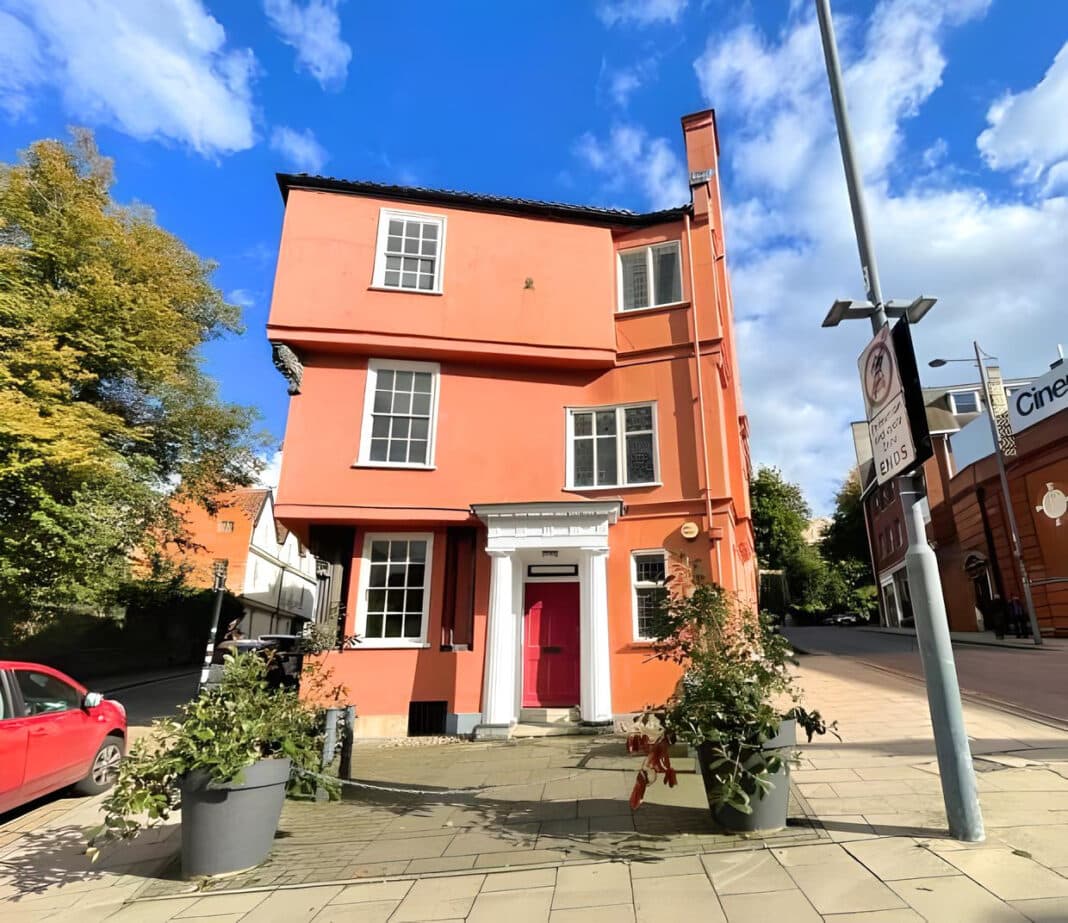A 400-year-old family home believed to be built using timber from the Spanish Armada is going under the hammer in Norwich. Sitting next to St Andrews Hall and opposite St Andrews Brew House, many have wondered at the unique towering design and striking coral colour of the Elizabethan Gasett House.
Built more than 435 years ago during Queen Elizabeth I’s reign, the Grade II-listed property has a hidden history. Often known by its other name, Armada House, the building was opened in 1589, the year after the Armada was defeated by a builder using timber (supposedly) from a sunken ship.
The story was depicted by the plaster carving of a Spanish galleon below the chimney. And over the past four centuries, it has been used as a school in 1864, a dental surgery, a solicitor and, more recently, a serviced office.
A surprising number of buildings claim to have been built using timbers from the Spanish Armada.
The Norwich house is one of several buildings said to have been built from reclaimed timbers from the fleet sent by King Philip II of Spain in 1588 to invade England in conjunction with the Spanish army in Flanders. The battle involved the first to be fought entirely with heavy guns, and its failure saved England and the Netherlands from possible absorption into the Spanish empire.
Wood Central understands that a mind-boggling number of pubs claim to have been built from timbers reclaimed from ships involved in the attempted invasion, including buildings in coastal counties such as the Abergavenny Arms, Rodmell (East Sussex), and the Minerva Inn, Plymouth (Devon).
However, Dr Damien Goodburn, a UK-based archaeologist, has cast doubt on several of these claims – having conducted a detailed study of historic carpentry and boat-building. He has pointed out, for example, that the timbers of medieval ships were not elements that could easily be incorporated into rectilinear terrestrial buildings, and there has been a tendency to misidentify curved timbers, such as braces and cruck blades, as deriving from nautical vessels.
“There is a common assumption that the re-use of ‘old ships timbers’ in buildings was common in medieval England,” Dr Goodburn said. “However, no well-substantiated archaeological example of such a practice in a standing medieval structure is known.”
“The claim that English buildings could be constructed using timbers from vessels sunk during naval battles – such as the Spanish Armada – must be treated with some caution,” according to Triskele Heritage, a Nottingham Archaeological Consulting Business.
“The vast majority of the Spanish ships lost in 1588 were wrecked on the shores of Scotland and Ireland – entirely separate political states that were often engaged in open hostilities with England.”
“How the supposed timbers were trafficked has yet to be explained, but acquiring the wrecked wood in the first place would have been mightily difficult.”
- Wood Central understands that the property is going under the hammer at Auction House East Anglia as a vacant freehold. If consent is given, it could be converted to residential use. The guide price is £350,000 to £400,000, and the auction will be held at 11 a.m. on December 11.






